Search results for: 'For'
-
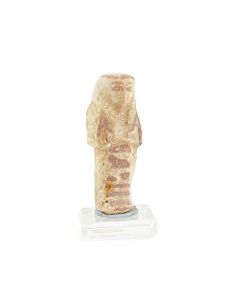 Ushabti for Henut-tawy
Ushabti for Henut-tawyThis Egyptian funerary statuette was found in the 19th century in the northern part of Abydos. It dates to the 22nd dynasty.
Price: on request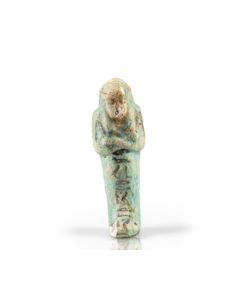 Ushabti for Bu-iri-eri-Renenutet
Ushabti for Bu-iri-eri-RenenutetEgyptian funerary figurine from the Third Intermediate Period. The owner's name is rarely attested and could hint to an origin in the Faiyum Oasis.
Price: on request Shabti for Ly-hotep-em-mut
Shabti for Ly-hotep-em-mutStunning Egyptian funerary figurine from the time of the 22nd dynasty. Formerly in the Rolls-Royce family collection.
Price: on request Ushabti for Ra-mes
Ushabti for Ra-mesThe mummiform funerary figurine dates to the Late Period of ancient Egypt, 26th to 31st dynasty. It is remarkable that it probably originates from the burial of two brothers, Ra-mes and Somtus-tefnacht.
Price: on request Ushabti for Somtus-tefnacht
Ushabti for Somtus-tefnachtThe mummiform funerary figurine dates to the Late Period of ancient Egypt, 26th to 31st dynasty. It is remarkable that it probably originates from the burial of two brothers, Somtus-tefnacht and Somtus-tefnacht.
Price: on request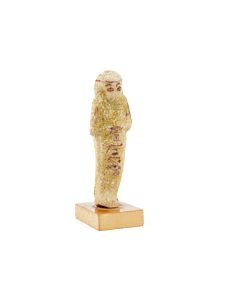 Egyptian ushabti for Nisi-ta-udjat-achet
Egyptian ushabti for Nisi-ta-udjat-achetInteresting figurine made of green faience with black paint. A typical funerary statuette from the Third Intermediate Period of ancient Egypt.
Price: on request Egyptian ushabti for Horus-in-Chemmis
Egyptian ushabti for Horus-in-ChemmisFunerary statuette made of turquoise faience with black paint and cute name inscription.
Price: on request Ptah-Sokar-Osiris statuette for Ta-scherit-Mehjt
Ptah-Sokar-Osiris statuette for Ta-scherit-MehjtLarge wooden statue representing the ancient Egyptian funerary deity Ptah-Sokar-Osiris. Nicely painted figurine including base from the Ptolemaic period of ancient Egypt.
€14,000 Shabti for Djed Khonsu
Shabti for Djed KhonsuExceptional funerary statuette from Deir el-Medina. Third Intermediate Period of Ancient Egypt.
Price: on request Egyptian ushabti for Pa-di-pepet
Egyptian ushabti for Pa-di-pepetThe tomb of Pa-di-pepet was discovered in 1893 west of the Pyramid of Teti at Saqqara. His funerary statuettes were given to important museums and into private collections. Dating to the reign of Pharaoh Psamtik I and his successor Necho II.
Price: on request Egyptian ushabti for Ra-mes
Egyptian ushabti for Ra-mesThe mummiform funerary figurine dates to the Late Period of ancient Egypt, 26th to 31st dynasty. It is remarkable that it probably originates from the burial of two brothers, Ra-mes and Somtus-tefnacht.
Price: on request Egyptian ushabti for Somtus-tefnacht
Egyptian ushabti for Somtus-tefnachtThe mummiform funerary figurine dates to the Late Period of ancient Egypt, 26th to 31st dynasty. It is remarkable that it probably originates from the burial of two brothers, Somtus-tefnacht and Somtus-tefnacht.
Price: on request Egyptian ushabti for Somtus-tefnacht
Egyptian ushabti for Somtus-tefnachtThe mummiform funerary figurine dates to the Late Period of ancient Egypt, 26th to 31st dynasty. It is remarkable that it probably originates from the burial of two brothers, Somtus-tefnacht and Somtus-tefnacht.
Price: on request Egyptian ushabti for Somtus-tefnacht
Egyptian ushabti for Somtus-tefnachtThe mummiform funerary figurine dates to the Late Period of ancient Egypt, 26th to 31st dynasty. It is remarkable that it probably originates from the burial of two brothers, Somtus-tefnacht and Somtus-tefnacht.
Price: on request Egyptian ushabti for Somtus-tefnacht
Egyptian ushabti for Somtus-tefnachtThe mummiform funerary figurine dates to the Late Period of ancient Egypt, 26th to 31st dynasty. It is remarkable that it probably originates from the burial of two brothers, Somtus-tefnacht and Somtus-tefnacht.
Price: on request Egyptian ushabti for Somtus-tefnacht
Egyptian ushabti for Somtus-tefnachtThe mummiform funerary figurine dates to the Late Period of ancient Egypt, 26th to 31st dynasty. It is remarkable that it probably originates from the burial of two brothers, Somtus-tefnacht and Somtus-tefnacht.
Price: on request Egyptian ushabti for Somtus-tefnacht
Egyptian ushabti for Somtus-tefnachtThe mummiform funerary figurine dates to the Late Period of ancient Egypt, 26th to 31st dynasty. It is remarkable that it probably originates from the burial of two brothers, Somtus-tefnacht and Somtus-tefnacht.
Price: on request Egyptian ushabti for Ra-mes
Egyptian ushabti for Ra-mesThe mummiform funerary figurine dates to the Late Period of ancient Egypt, 26th to 31st dynasty. It is remarkable that it probably originates from the burial of two brothers, Ra-mes and Somtus-tefnacht.
Price: on request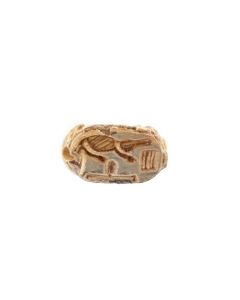 Egyptian scarab for Sobekhotep
Egyptian scarab for SobekhotepThe back of the scarboid body is shaped like a lying cat. New Kingdom of ancient Egypt, around 1000 BC.
Price: on request Funerary statuette for Princess Henuttawy
Funerary statuette for Princess HenuttawyThe Egyptian shabti is from the daughter of Pinudjem II who ruled Egypt during the Third Intermediate Period. It was excavated in the 1840ies at the Ramesseum.
€12,400 Egyptian ushabti for Viceroy Hori
Egyptian ushabti for Viceroy HoriOne of only 30 known funerary statuettes from the tomb of Hori I, King's son of Kush. Viceroy of Kush in Nubia during the reign of the pharaohs Ramesses III and IV. An exhibited and repeatedly published piece.
€8,850 Egyptian funerary figurine for Nefer-hotep
Egyptian funerary figurine for Nefer-hotepInteresting ushabti from Memphis dating to the late 19th Dynasty, New Kingdom. The owner was an official from the Temple of Ptah.
Price: on request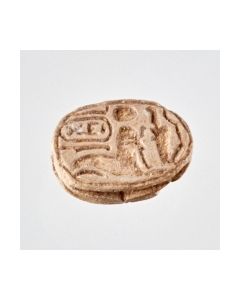 Memorial scarab for Thutmose III
Memorial scarab for Thutmose IIIA royal sphinx and Maat, the goddess of truth and justice adorn the lower side. Above them is the cartouche of Mencheperre. The piece is probably from the regin of Ramesses IV or V.
Price: on request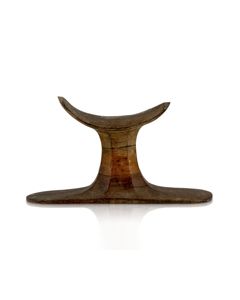 Egyptian headrest for a funeral or daily use
Egyptian headrest for a funeral or daily useThe well-preserved wood object is a rare example for this funenary ritual. The high quality piece was made around the Amarna Period in the late 18th dynasty of ancient Egypt.
€3,650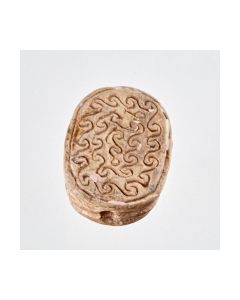 Scarab with spiral design and symbol for good luck
Scarab with spiral design and symbol for good luckThe Egyptian scarab from the Second Intermediate Period is decorated with a geometrical pattern. A nefer hieroglyph stands for good luck.
Price: on request Extremely rare aureus of Saturninus coined for Probus - 7th known specimen of this coin
Extremely rare aureus of Saturninus coined for Probus - 7th known specimen of this coinDie 7. weltweit bekannte Münze des Saturninus überhaupt und damit eines der seltensten Stücke der römischen Numismatik in exzellenter Erhaltung.
Price: on request Scarab with magic formula
Scarab with magic formulaThe stamp shows the anra formula in a cartouche. The amulet should thus serve a magic or ritual purpose for its owner.
Price: on request Scarab with protective formula
Scarab with protective formulaAmulet for protection. Stilized lotus flowers on the upper side. Magic formula on the lower side. This scarab is described in the catalogue of Irène Gautier-Vodoz.
Price: on request Statue of Anubis in jackal form
Statue of Anubis in jackal formThe 25cm long figure was probably once mounted on a sarcophagus lid. In this position Anubis had the function as god of embalming.
Price: on request Ägyptisches Amulett in Form des Udjatauges
Ägyptisches Amulett in Form des UdjataugesVoll dekoriertes Udjatauge (Auge des Horus) mit schwarz aufgetragener Pupille und geritzten Details. Aus der 22. bis 25. Dynastie des Alten Ägyptens.
Price: on request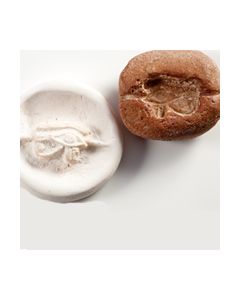 Ägyptische Gussform aus der 3. Zwischenzeit
Ägyptische Gussform aus der 3. ZwischenzeitGussform aus Terrakotta, für ein Amulett in Form eines Udjatauges. 22. bis 25. Dynastie, Dritte Zwischenzeit des Alten Ägypten.
Price: on request Abdruckform zur Fertigung von Öllampen - Unterseite - selten
Abdruckform zur Fertigung von Öllampen - Unterseite - seltenZur Fertigung frühchristlicher nordafrikanischer Öllampen aus rotem Ton. Museumswürdiges Stück, perfekt erhalten.
Price: on request Abdruckform zur Fertigung von Öllampen - Unterseite - selten
Abdruckform zur Fertigung von Öllampen - Unterseite - seltenZur Fertigung frühchristlicher nordafrikanischer Öllampen aus rotem Ton. Museumswürdiges Stück, perfekt erhalten.
Price: on request Abdruckform zur Fertigung von Öllampen - Unterseite - selten
Abdruckform zur Fertigung von Öllampen - Unterseite - seltenZur Fertigung frühchristlicher nordafrikanischer Öllampen aus rotem Ton. Museumswürdiges Stück, perfekt erhalten.
Price: on request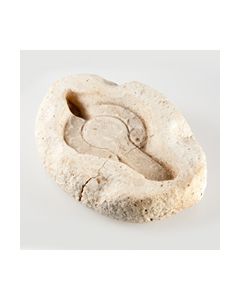 Abdruckform zur Fertigung von Öllampen - Oberseite - selten
Abdruckform zur Fertigung von Öllampen - Oberseite - seltenZur Fertigung frühchristlicher nordafrikanischer Öllampen aus rotem Ton. Im Spiegel Tiermotiv. Museumswürdiges Stück.
Price: on request Ägyptische Gussform aus der Amarna-Zeit
Ägyptische Gussform aus der Amarna-ZeitGussform aus Terrakotta, für ein Amulett in Form eines Blütenblatts. 18. bis 19. Dynastie, 1600 v. Chr. bis 1100 v. Chr., Altes Ägypten.
Price: on request

